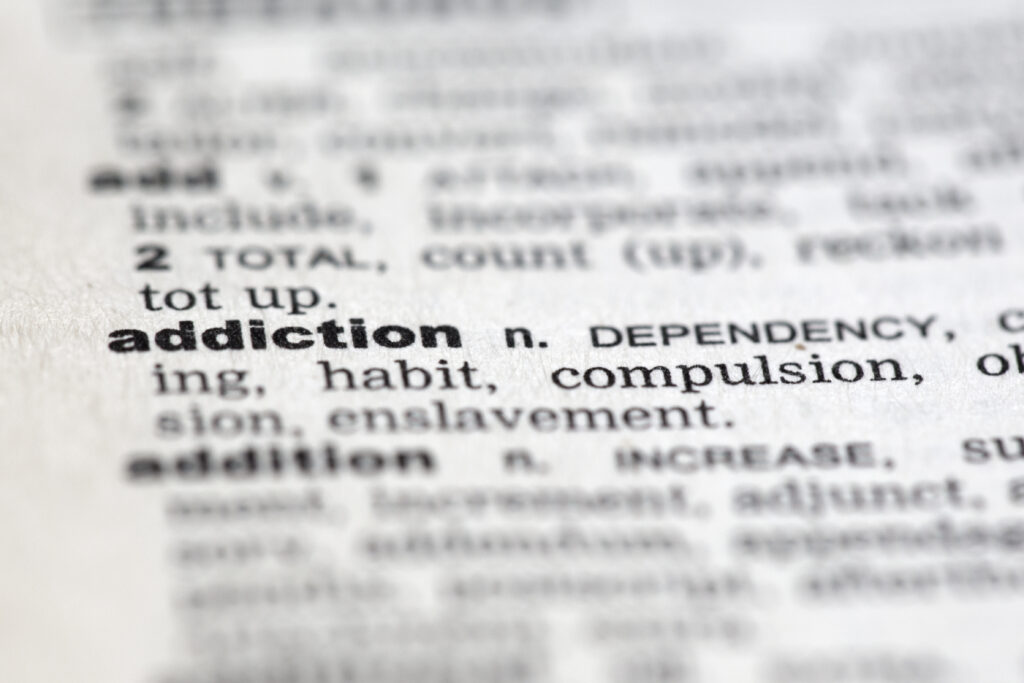
Exploring the intricate relationship between mental health and addiction is crucial for understanding the complexities of these co-occurring disorders. This article delves into the bidirectional influence, underlying mechanisms, societal and economic implications, and effective treatment and prevention strategies for individuals grappling with these interconnected issues.

The relationship between mental health and addiction is a complex and intertwined one, often described as bidirectional. This means that not only can substance abuse trigger or exacerbate mental health disorders, but existing mental health issues can also increase the likelihood of substance use and addiction. Substance abuse can serve as a coping mechanism for those with mental health disorders, leading to a cycle where each condition perpetuates the other.
The interplay between psychological, environmental, and biological factors is crucial in understanding how habits and addictions form and persist. Recognizing the multifaceted nature of these factors is key to breaking the cycle of addiction and mental illness.
For instance, a study highlighted a positive bidirectional relationship between cannabis use and psychosis symptoms in trauma victims, illustrating how interpersonal trauma can influence the cycle of addiction and mental health.

Neurotransmitters are pivotal in the brain’s communication network, influencing our mood, behavior, and overall mental health. Substances like drugs or alcohol can disrupt this delicate balance, leading to addiction and exacerbating mental health disorders. For instance, drugs such as Ecstasy, Cocaine, and PCP can significantly affect neurotransmitters like Glutamate, which is essential for neuron activation.
Neurotransmitters and their imbalances play a significant role in both addiction and mental health disorders. Understanding these chemical messengers is crucial for developing effective treatments.
The relationship between neurotransmitters and brain chemistry is complex, involving key players such as Dopamine, Serotonin, Norepinephrine, and GABA. These neurotransmitters are often the targets of both illicit substances and prescribed medications, aiming to correct imbalances and alleviate symptoms.

The interplay between environmental and genetic factors is pivotal in understanding the link between mental health and addiction. Genetics and environmental factors contribute significantly to the development of co-occurring substance abuse and mental health disorders. Familial history of either condition indicates shared genetic vulnerabilities, such as variants in serotonin transporters, making individuals biologically more susceptible to these disorders.
Genetic factors also play a role in individual risk for drug and alcohol dependence. For instance, genes like OPRM1 and BDNF have been associated with an increased risk of drug addiction. Genetic polymorphism, which refers to the presence of multiple genes involved in addiction, can affect patient responsiveness to treatment and disease prevention.
Shared vulnerabilities, both genetic and environmental, drive the development of co-occurring disorders. Adverse childhood events (ACEs), for example, alter neurological pathways for processing emotions, which can manifest later as mental health or addiction issues.
Environmental influences, such as stress, trauma, and peer pressure, also play a crucial role. They can trigger the genetic predisposition towards addiction, acting as the catalyst in the expression of these genetic risks. Understanding this complex relationship is essential for developing targeted interventions and personalized treatment approaches.

The healthcare system bears a significant weight due to substance abuse, with impacts ranging from increased hospital admissions to the need for specialized treatment programs. The economic burden of drug abuse on society is staggering, encompassing not only healthcare expenditures but also law enforcement costs and lost workplace productivity.
The complexity of addiction requires a multifaceted approach to treatment, considering the individual’s physical, mental, and social needs. Tailored healthcare screening and geriatric-specific treatment programs are necessary to address the unique challenges faced by different populations.
Addiction in medical professionals further complicates the landscape, as doctors and nurses account for some of the highest rates of addiction. This not only affects their personal health but also the quality of care they provide, patient safety, and the overall functioning of healthcare services.

Substance abuse not only affects individuals but also has a profound impact on workforce productivity and economic growth. Job loss and decreased productivity due to substance-related impairments can lead to significant financial instability for both employees and employers. The costs associated with obtaining drugs, potential legal fees, and healthcare expenses contribute to the economic strain.
The economic burden of substance abuse extends beyond personal financial ruin, affecting the broader economy through increased healthcare expenditures, law enforcement costs, and lost workplace productivity.
Here is a brief overview of the economic impact:
Investing in effective prevention and treatment programs is essential to mitigate these costs and support economic stability.

The stigma around addiction and mental health is a formidable barrier to seeking help. Public stigma perpetuates negative stereotypes, leading to social exclusion and a reluctance to disclose or seek treatment. This is compounded by self-stigma, where individuals internalize these negative perceptions, undermining their self-esteem and recovery efforts.
Stigma and misconceptions about mental health and addiction often lead to discrimination and social exclusion, which can deter individuals from seeking the help they need.
Addressing these barriers requires a multifaceted approach, including public awareness campaigns and gender-specific treatment programs that consider caregiving responsibilities. Socioeconomic factors such as poverty and unemployment also play a critical role in the accessibility of treatment.

Integrated treatment approaches are pivotal in addressing the multifaceted nature of co-occurring disorders. These approaches aim to provide a holistic treatment experience by combining various evidence-based therapies tailored to meet the unique needs of each individual. Cognitive-behavioral therapy (CBT), motivational interviewing, and contingency management are commonly employed to tackle substance use disorders (SUDs) alongside other mental health conditions.
Medication-assisted treatment is also a key component, often used in conjunction with behavioral therapies to enhance outcomes. Medications may be prescribed to alleviate cravings, manage withdrawal symptoms, or block the effects of substances, ensuring a more comprehensive approach to recovery.
Creating a personalized treatment plan is essential, encompassing a mix of therapeutic modalities, counseling, medication, and support systems. This plan is continuously adapted to the evolving needs of the patient, ensuring the highest possibility of successful recovery.

Managing dual diagnosis presents a delicate balance between identifying intertwined symptoms and avoiding misdiagnosis. Integrated assessment tools are crucial in evaluating a patient’s social, medical, and family histories, along with psychological testing, to ensure accurate diagnosis and effective treatment planning.
Treatment for co-occurring disorders must be coordinated and specialized, addressing both conditions simultaneously. Medications are used to correct chemical imbalances, while therapies such as Cognitive Behavioral Therapy (CBT) and Dialectical Behavior Therapy (DBT) focus on building coping strategies and emotional regulation.
The intricacies of treating comorbid conditions underscore the need for a multifaceted approach that enhances treatment adherence, minimizes relapse risk, and improves life quality.
Challenges in dual diagnosis management include:

In the realm of addiction treatment, personalized care stands as a cornerstone for successful recovery. Each individual’s journey through addiction and recovery is as unique as their fingerprint, shaped by their personal experiences, strengths, and struggles. Tailoring treatment to the individual’s specific needs is not just a matter of healthcare; it is a matter of human dignity and collective well-being.
A comprehensive, individualized treatment plan is crucial for addressing the specific needs of each person. This plan may include a combination of therapies, counseling, medication, and support systems tailored to the individual’s circumstances.
Understanding that there are no one-size-fits-all solutions, customized treatment programs must consider various barriers to treatment, including caregiving responsibilities and stigma. Gender-specific treatment programs, for instance, can address these challenges more effectively. Encouraging treatment and sobriety through personalized care not only aids in recovery but also fortifies the individual’s resilience against relapse.

Public awareness campaigns play a pivotal role in the fight against substance abuse and the promotion of mental health. Educational programs targeting children and adolescents are essential in preventing the onset of drug abuse. Initiatives like the “Talk. They Hear You.” campaign by SAMHSA encourage open conversations about substance use, equipping parents and caregivers with the tools to engage with youth effectively.
Community-based initiatives further strengthen these efforts. Local coalitions and harm reduction strategies, such as syringe exchange programs, address substance abuse through coordinated community action. For instance, programs like Teen Mental Health First Aid and mindfulness meditation workshops not only educate but also provide practical support and coping skills to those at risk.
We must address this barrier. Education empowers wise usage; monitoring protects developing minds. Balancing connectivity and health is key.
Prescription Drug Monitoring Programs (PDMPs) are another critical component, serving as state-run databases that track prescriptions and help prevent the misuse of controlled substances. By integrating these various approaches, we can create a comprehensive strategy to reduce the incidence of substance abuse and support mental health.

Early intervention in the context of substance abuse and mental health is pivotal in altering the life trajectory of individuals, particularly teens. By addressing mental health concerns promptly, we can circumvent the progression to substance abuse and the myriad of associated negative outcomes, such as academic failure and social isolation.
Early intervention is not just about preventing substance abuse; it’s about instilling resilience and coping mechanisms that can last a lifetime. It’s about setting individuals up for success in all areas of their lives.
Furthermore, approaching interventions with caution and professional guidance ensures that the process is safe and effective, ultimately leading to better outcomes for those at risk.

The journey to recovery from addiction is often long and fraught with challenges. Support systems play an indispensable role in this process, offering a lifeline to those seeking to overcome substance abuse. These networks, which may include family, friends, support groups, and broader community resources, provide not just emotional sustenance but also practical assistance and accountability.
The effectiveness of these support systems cannot be overstated. People with substance use disorder (SUD) can feel alienated and misunderstood, but within a supportive community, they find understanding and hope. It is within the embrace of these networks that individuals often find the strength to continue their recovery journey, even in the face of relapse or other setbacks.
The presence of a robust support network is often the cornerstone of successful long-term recovery. It is the unsung hero in the narrative of overcoming addiction, providing a foundation upon which individuals can rebuild their lives.

Support groups and peer networks are foundational to the recovery process, offering a unique blend of empathy, shared experience, and hope. These groups, such as Alcoholics Anonymous (AA) and Narcotics Anonymous (NA), create safe spaces where individuals can share their triumphs and setbacks without fear of judgment. The solidarity found within these communities fosters a sense of belonging and understanding that is often pivotal in maintaining sobriety.
The collective wisdom and coping strategies shared in support group meetings are invaluable resources for those navigating the complexities of addiction and mental health recovery.
Structured programs like 12-step meetings also provide mentorship through sponsors, which can be a beacon of hope for many. The role of these support systems extends beyond the individual, impacting the broader recovery community by building a network of support that emphasizes accountability and continuous growth.

Relapse prevention is a critical component of long-term management in addiction recovery. It’s important to recognize that relapse is not a sign of failure but rather a part of the journey that can be used as a learning experience. Developing a comprehensive relapse prevention plan is essential for maintaining sobriety and managing the chronic nature of addiction.
Commitment to long-term change is the cornerstone of recovery. This involves setting realistic goals, acknowledging progress, and staying engaged with support systems. It’s a continuous process that requires dedication and the willingness to seek help when needed.
Here are some key strategies for relapse prevention:
Remember, recovery is a dynamic process that involves both progress and setbacks. With the right strategies and support, individuals can navigate the complexities of addiction and maintain a sober lifestyle.

The intricate tapestry of addiction and mental health is one that weaves together biological, psychological, and social threads, creating a complex pattern that affects individuals and society profoundly. Our exploration has highlighted the bidirectional relationship between mental health disorders and substance abuse, emphasizing the need for integrated treatment approaches that address both issues concurrently. Understanding this link is not just an academic exercise; it is a crucial step towards developing more effective interventions and support systems. By acknowledging the multifaceted nature of addiction and mental health, we can pave the way for healing, recovery, and a better quality of life for those affected by these intertwined challenges.
Mental health disorders and addiction are connected through a bidirectional relationship where each can influence and exacerbate the other. Mental health issues can lead individuals to self-medicate with substances, while substance abuse can worsen or trigger mental health conditions.
Yes, addiction can contribute to the development of new mental health problems due to its negative impact on brain chemistry and overall functioning, potentially leading to conditions such as depression, anxiety, or psychosis.
Integrated treatment is important for co-occurring disorders because it addresses both the addiction and the mental health condition simultaneously, recognizing the interplay between them and providing a more comprehensive approach to recovery.
Genetics can predispose individuals to addiction and mental health disorders, while environmental factors such as trauma, stress, and social context can trigger or exacerbate these conditions. Both play significant roles in the complex interplay between addiction and mental health.
Addiction affects societal and economic aspects by increasing healthcare costs, reducing workforce productivity, and hindering economic growth. It also contributes to social stigma and creates barriers to treatment for those in need.
Prevention strategies include public awareness campaigns, education on the risks of substance use, early intervention for those at risk, and fostering strong support systems and community involvement to provide resources and support for mental health.
